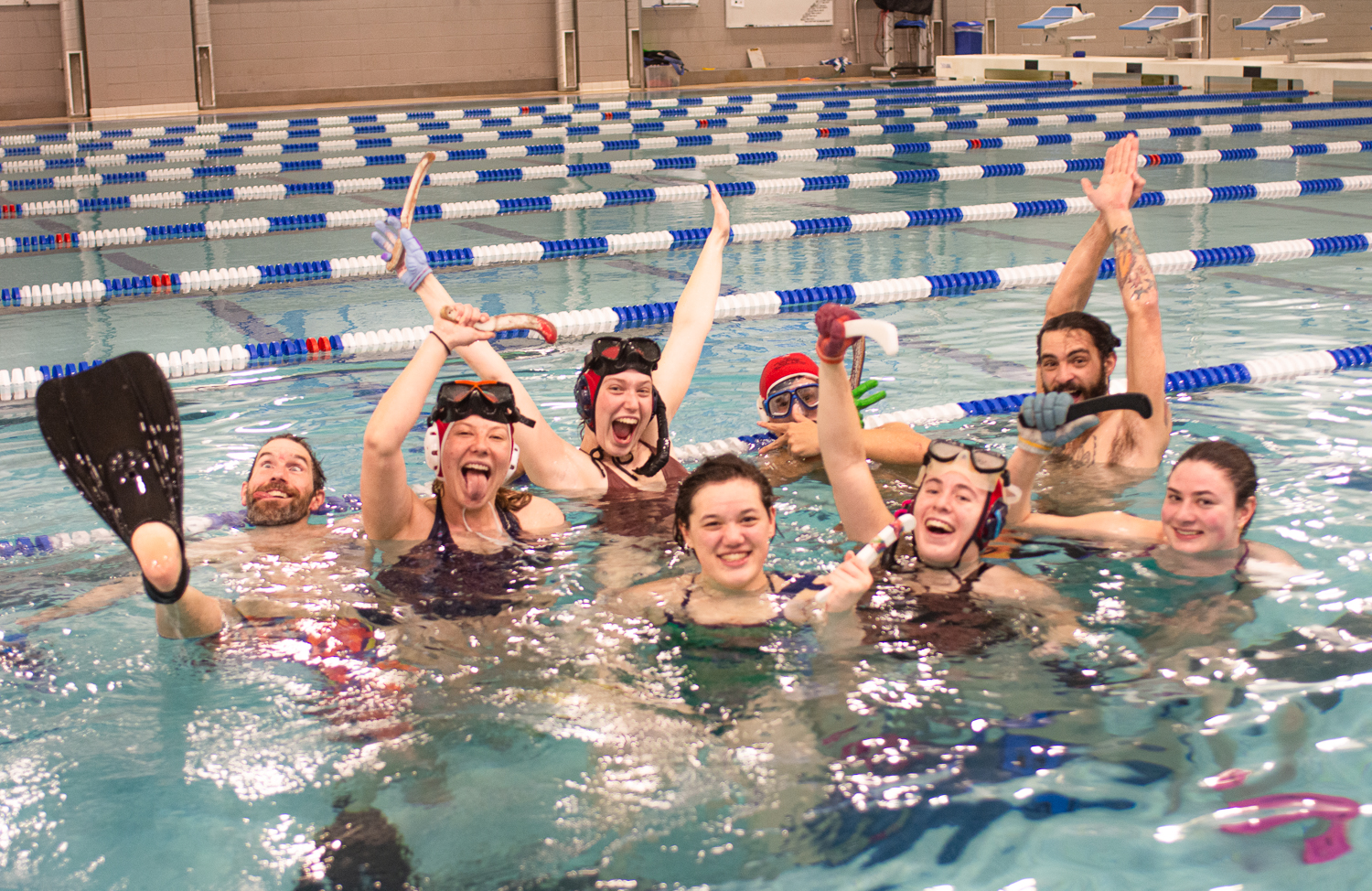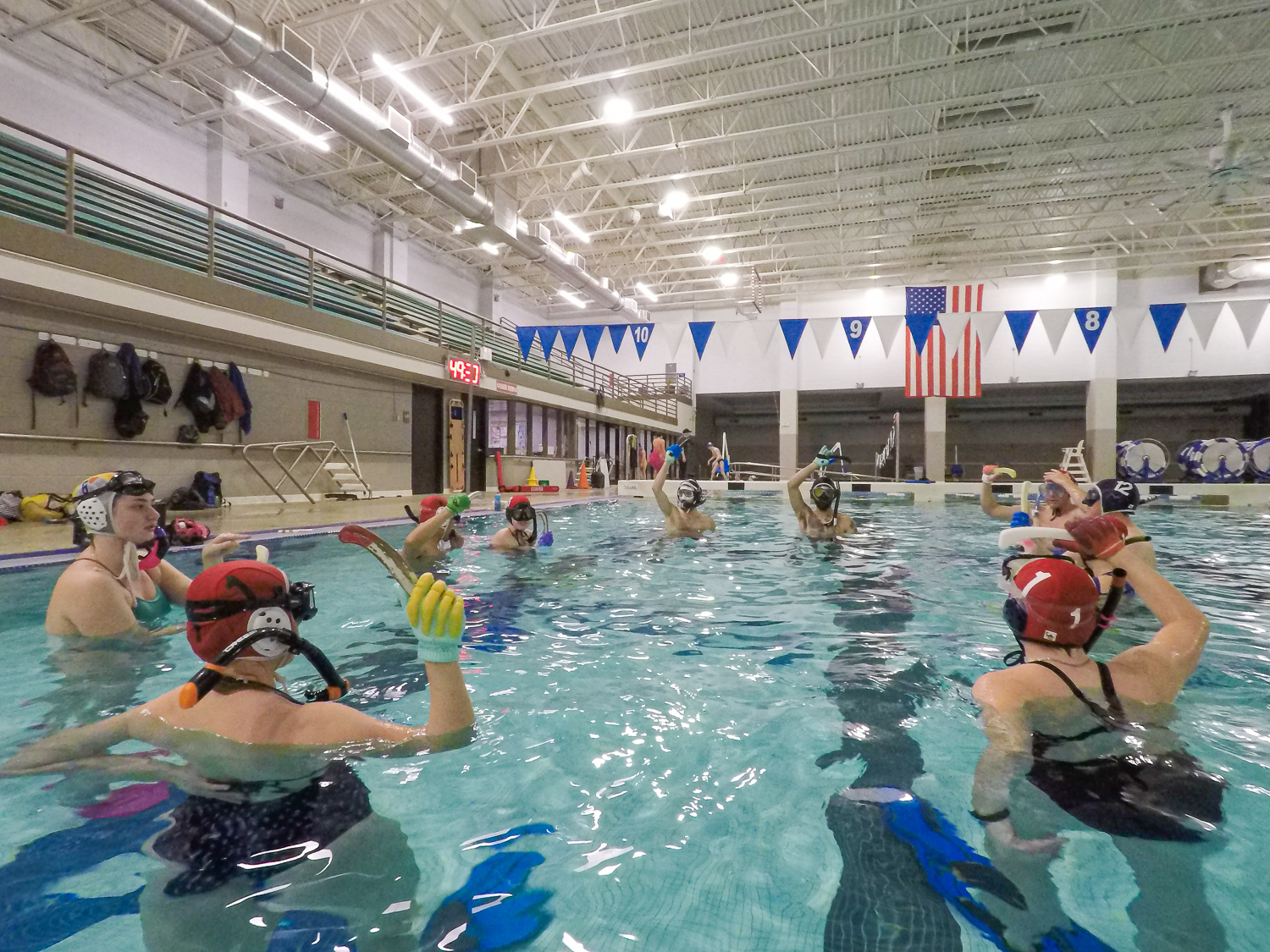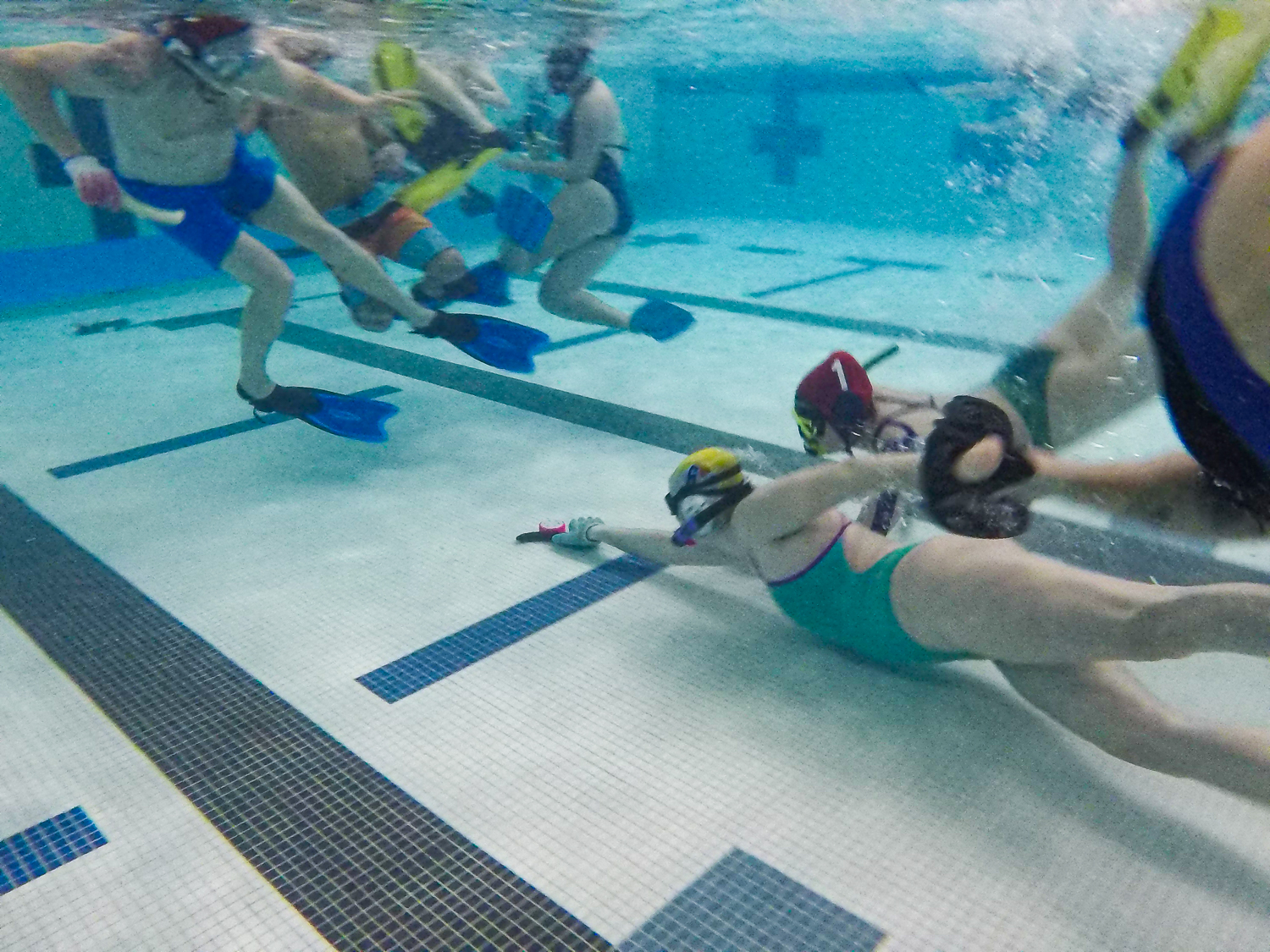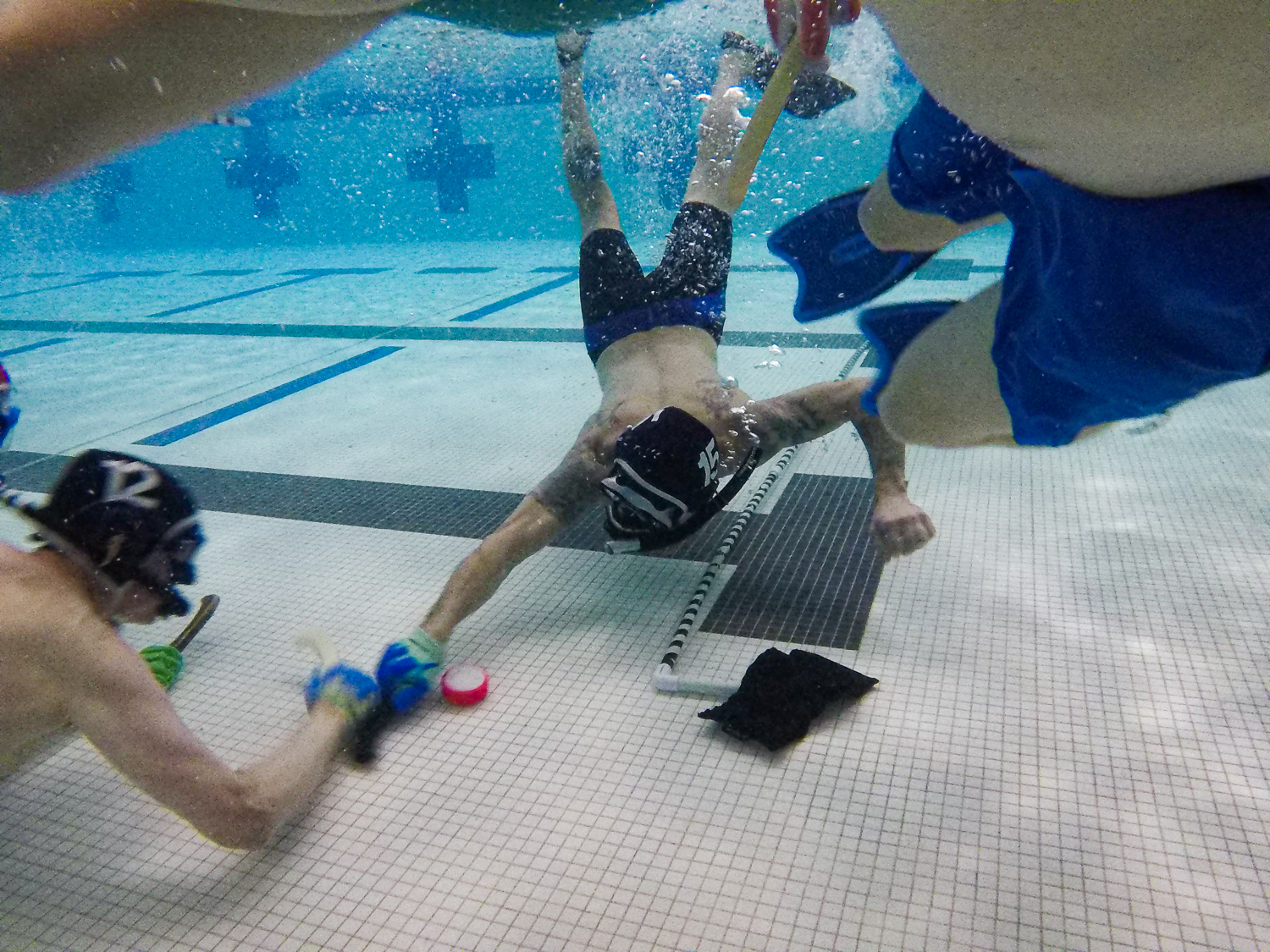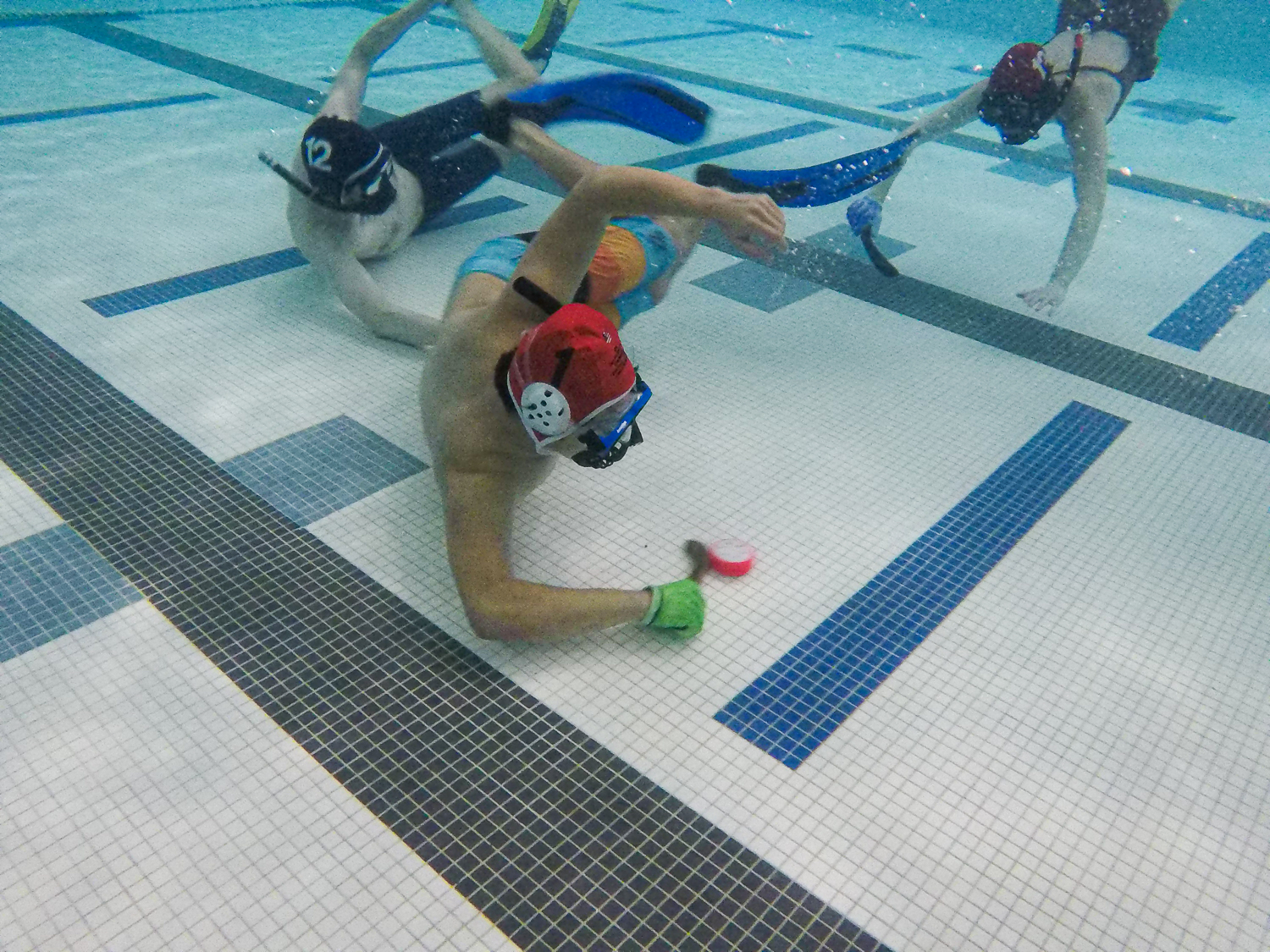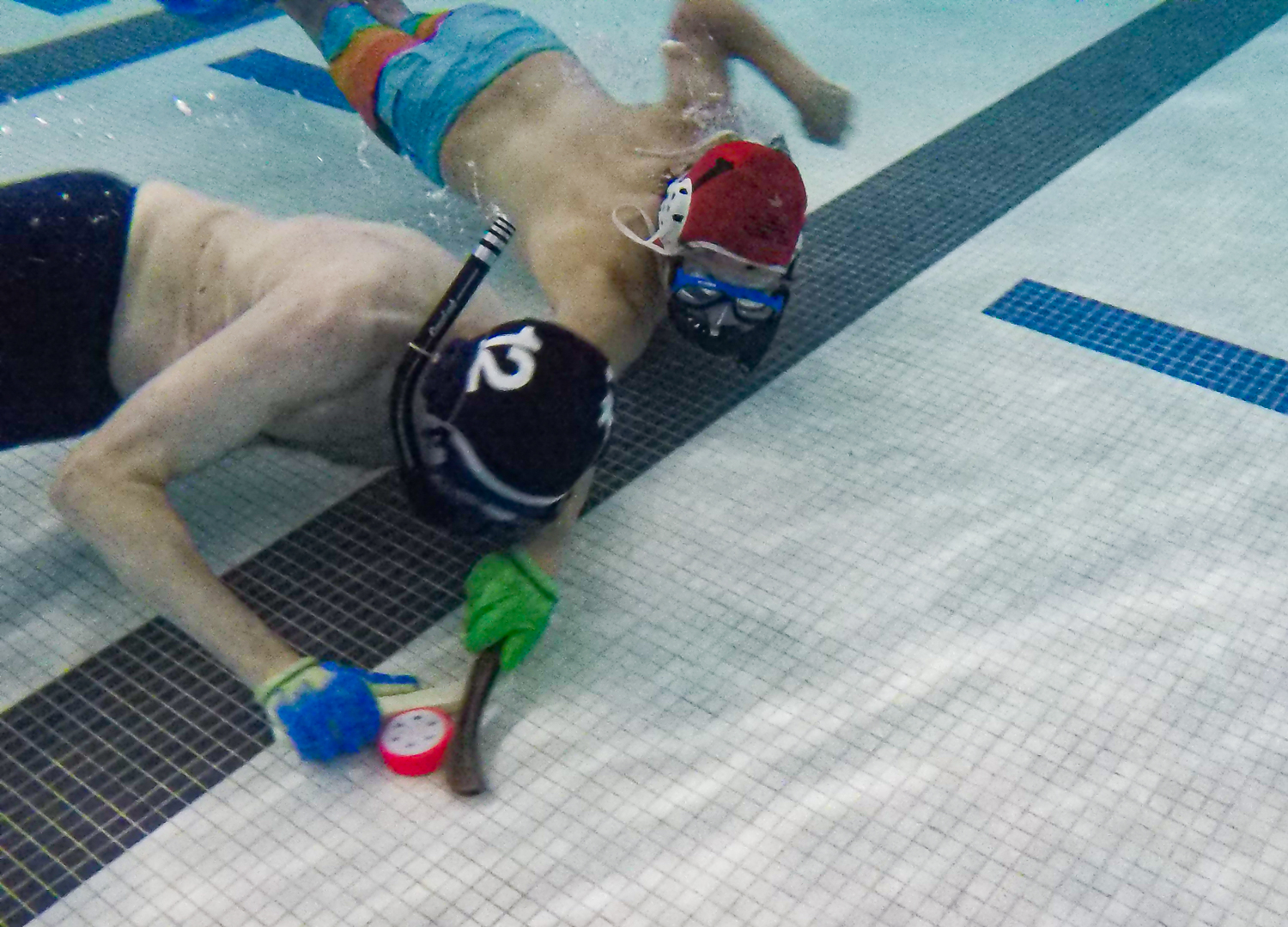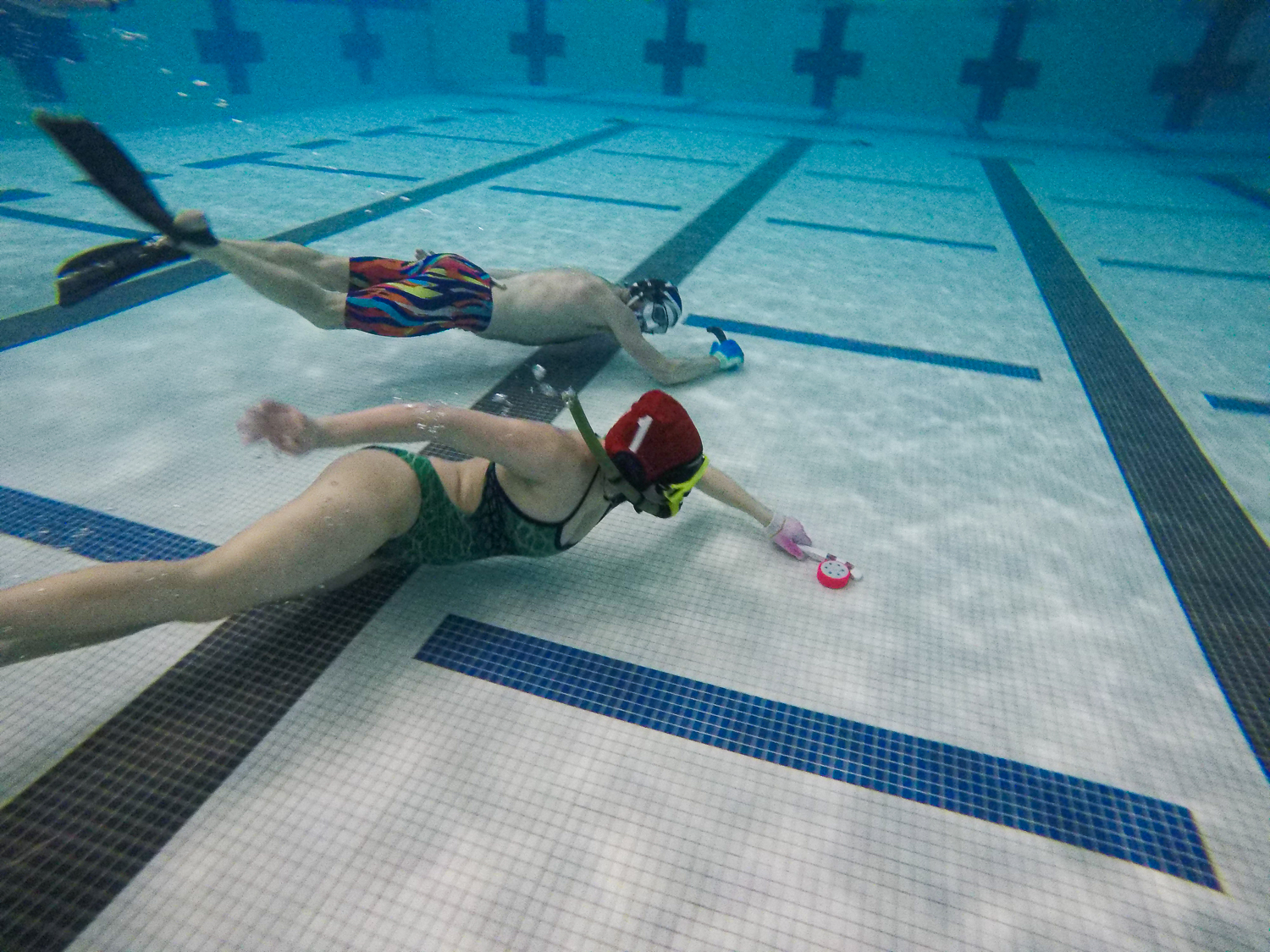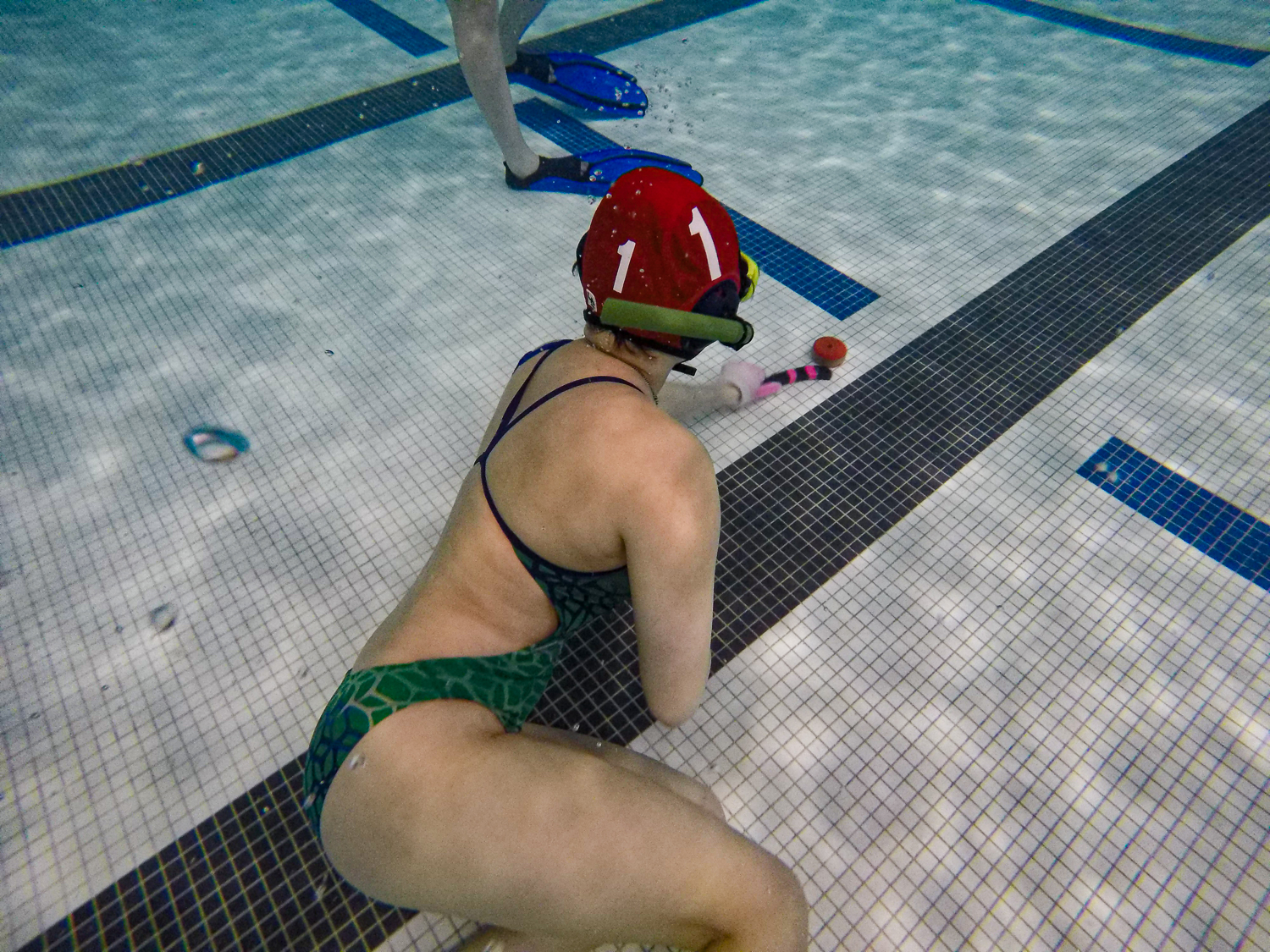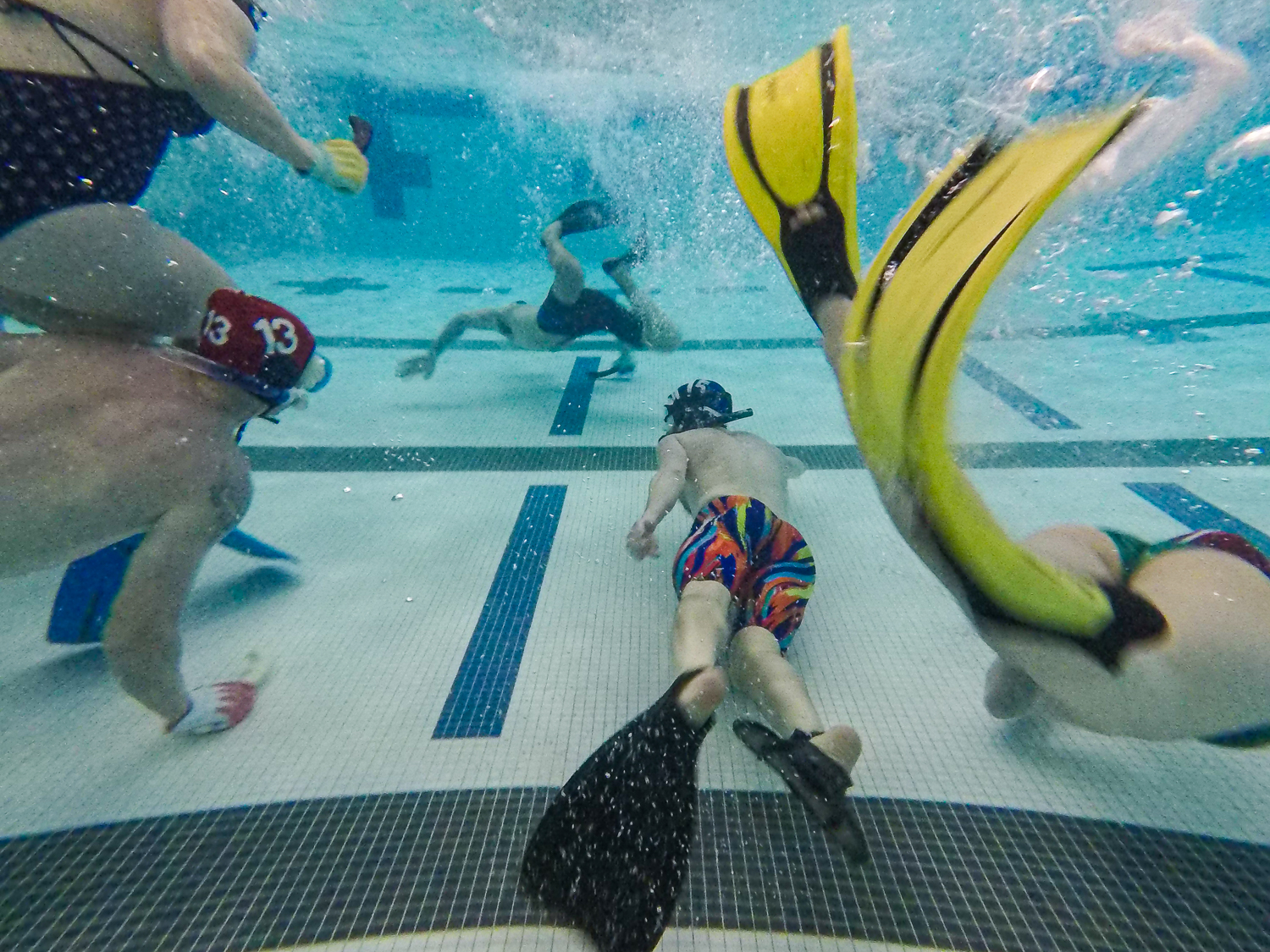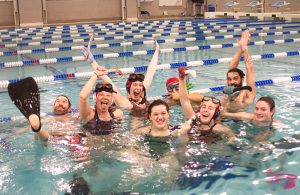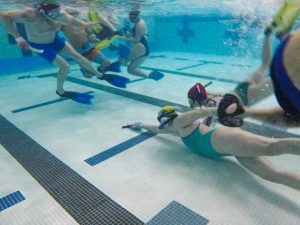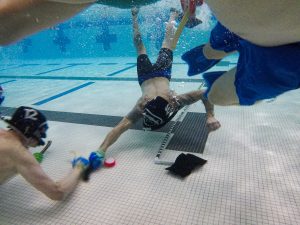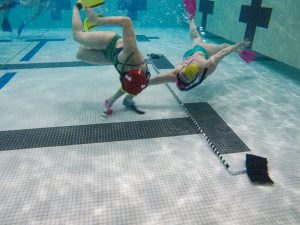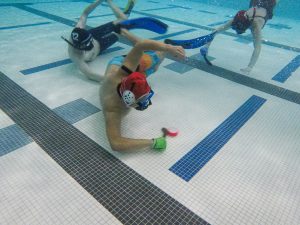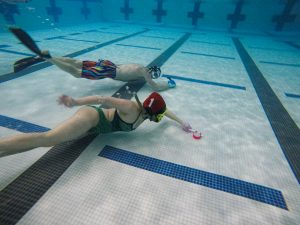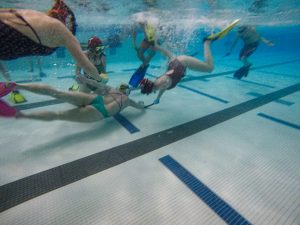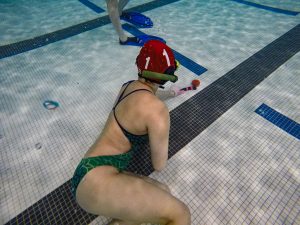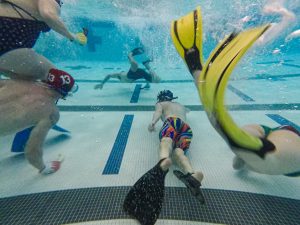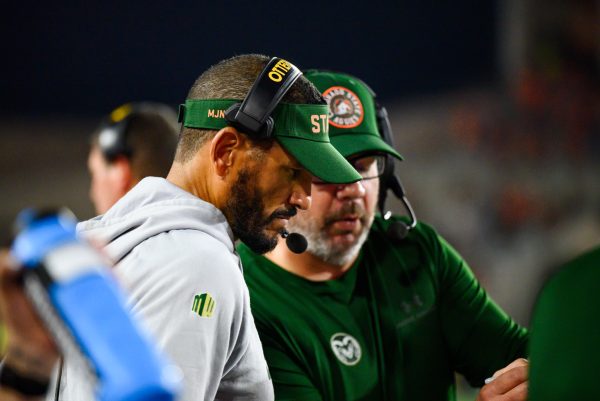Deep dive into hockey — underwater
Collegian | Tri Duong
Underwater hockey players search to find the puck at Edora Pool Ice Center in Fort Collins Feb. 7
February 9, 2023
The thought of hockey is often accompanied by ideas of ice, skates and hard hits. While World Atlas estimates there are over 2 billion fans worldwide of ice hockey, it may not be the most interesting form of hockey. To some people, that honor would go to underwater hockey.
Underwater hockey is played with six people, similar to ice hockey but without a goalie. It also uses different equipment.
While there are no scuba tanks, players use a snorkel and goggles to breathe and fins to swim around. In order to move the puck around, athletes use a stick that is slightly bigger than a butter knife and has a slight bend in the middle.
The goals look similar to weighted jump ropes, and the object of the game is to get the puck to touch the goal. It doesn’t have to pass the goal as long as the puck touches the line.
Since there are no goalies in underwater hockey, teams have to come up with a strategy that is aggressive in order to push the puck but also smart to not leave the field open for a breakaway goal. Phil Hickey, the coach of the United States women’s national underwater hockey team, said the 2-3-1 formation is currently the most popular formation in the world competition.
“We’ve migrated gradually to a 2-3-1 formation,” Hickey said. “You have two forwards, three midfielders and one single back, and the idea is (that) you keep attacking the outsides of the other team’s formation.”
Hickey said the idea of attacking the outsides is to get the opposing team to stack up heavy on one side of the pool, which then allows a player to swing the puck across their midline and attack open space. He also said teamwork is important in underwater hockey. While in several other sports you might see a singular player dominating the game, it’s not always like that in underwater hockey.
“All the players are good enough that it’s very, very difficult for any one player to dominate a game,” Hickey said. “No matter how good you are at maneuvering the puck or how fast you are, eventually, you have to leave and go to the surface to breathe, and it really does become much more about the teamwork and the synergy and the timing.”
Hickey also helps coach the club in Fort Collins. They provide equipment to people who want to participate and go through step-by-step training on the rules and basics of underwater hockey before having a short scrimmage at the end of the practice. Everyone who is a regular is also more than willing to help or answer any questions with a smile.
“We want it to be an environment that is wholly positive.” –Helen Jewart, CSU Underwater Hockey Club president
The club prides itself on being an inclusive environment, so there are people playing for their first time as well as people who compete at a high level. Crystal Boyer, the vice president of the club, takes part in tournaments outside of Fort Collins. Her most recent one was at Battle @ Altitude in Denver Jan. 28-29. Boyer said one of her favorite aspects of these tournaments is the community they provide.
“What’s really cool about the underwater hockey community is that it’s really small,” Boyer said. “Everyone in the hockey community kind of knows each other worldwide. … I could probably call up a hockey person and stay at a house in Australia.”
In her most recent tournament, Boyer said her team played 10 games over the two days, each day lasting 12 hours. While the teams do get subs, she explained, they go in and play hard for 20 seconds before subbing out.
To picture that, you would get 20 seconds of rest before holding your breath, diving down and swimming hard back and forth throughout the field of play. You would then go back and take another 20 seconds of rest before repeating that same process over and over throughout two 15-minute halves. You would then have to repeat this throughout an entire day’s worth of competition.
In Boyer’s case, her team played 10 total matches. The length of an underwater hockey area is 25 meters, or about 82 feet, or a little bit longer than two school buses. Since the days are so long, the players help out with different aspects of the tournament. For this tournament, Boyer was helping stock the food room.
“I was kind of in charge of helping the food room, and so there’s this giant room where everyone hangs out, and there’s a shit ton of food,” Boyer said. “I went to Costco, and I looked like the most ridiculous person ever. I had one of those flat cart things, and I’m rolling out 300 bananas.”
First-year Aria Paul spoke more about the group dynamic in Fort Collins.
“(The club is) still quite young, so a lot of (the students) haven’t played before, and so they got their start here and in college,” Paul said. “It’s definitely small and tight-knit. I’m the only freshman at the moment, but we’re trying to branch out to get people to try it and see if they like it.”
While underwater hockey sounds intimidating, it really isn’t that scary. Club President Helen Jewart wants the club’s goal to be just having fun, gaining skills and being in an environment that’s not solely about competition.
“The point is that anyone can play underwater hockey,” Jewart said. “For me, I think I had a long history in sports environments that weren’t super positive, and I think that happens to a lot of athletes. … We want it to be an environment that is wholly positive.”
Reach Damon Cook at sports@collegian.com or on Twitter @dwcook2001.



